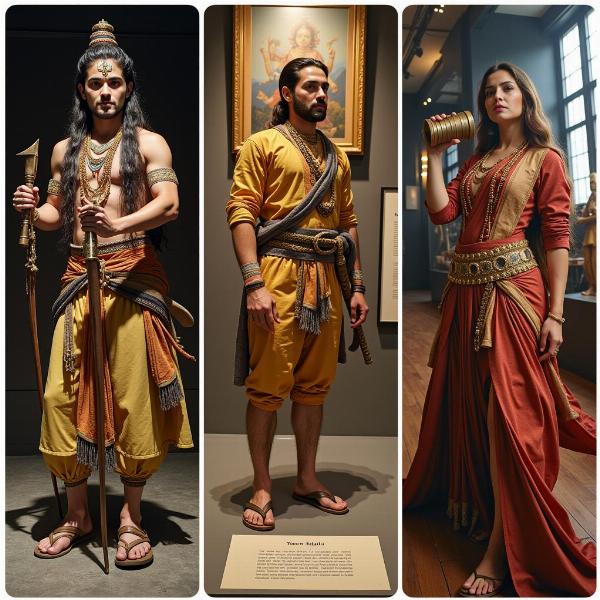Mugdar meaning in Hindi revolves around the concept of a mace, a blunt weapon used in ancient warfare. Understanding its various meanings, historical context, and cultural significance offers a fascinating glimpse into India’s rich past. This article explores the multifaceted nature of “mugdar,” delving into its linguistic nuances and symbolic representations.
Unraveling the Mugdar: Meaning and Significance
The word “mugdar” (मुग़्दर) primarily signifies a mace, a heavy club-like weapon often studded with metal spikes or knobs. Imagine a warrior wielding this powerful instrument on the battlefield, its impact leaving a devastating mark. Beyond its literal meaning as a weapon, “mugdar” also holds symbolic weight, representing strength, power, and authority. In ancient India, it was often associated with deities and royalty, further emphasizing its importance.
Mugdar in Hindi Literature and Mythology
The term “mugdar” frequently appears in Hindi literature, particularly in epics like the Mahabharata and Ramayana, where it’s wielded by powerful heroes and gods. Think of Hanuman, the mighty monkey god, often depicted with a “gada” (a similar weapon to the mugdar), symbolizing his immense strength and devotion. These literary references solidify the “mugdar’s” place as a symbol of divine power and martial prowess.
Exploring Variations and Related Terms
While “mugdar” is the most common term, several related words exist in Hindi, each with slightly different nuances. “Gada,” for example, is often used interchangeably, although it typically refers to a simpler, less ornate mace. “Sonta,” another related term, describes a smaller, more manageable club. Understanding these distinctions provides a richer understanding of the “mugdar’s” broader context within the Hindi lexicon.
Mugdar: Beyond the Battlefield
The “mugdar’s” significance extends beyond the realm of warfare. It often appears in religious iconography, associated with deities like Hanuman and Vishnu, representing their ability to vanquish evil and protect their devotees. In this context, the “mugdar” transcends its martial connotations and becomes a symbol of divine justice and protection.
What does Mugdar symbolize in Indian culture?
Mugdar symbolizes strength, power, and authority in Indian culture. It is often associated with deities and royalty, further reinforcing its symbolic importance.
Are there different types of Mugdars?
Yes, variations exist, including the “gada” and “sonta,” which differ slightly in size, shape, and ornamentation.
Is Mugdar still used today?
While no longer used in warfare, the “mugdar” retains its symbolic value in religious and cultural contexts. It can be seen in traditional performances and rituals.
Conclusion: The Enduring Legacy of the Mugdar
From its literal meaning as a weapon to its symbolic representation of power and divinity, “mugdar meaning in Hindi” encompasses a rich tapestry of historical and cultural significance. Its presence in literature, mythology, and religious iconography solidifies its enduring legacy within Indian culture. Understanding the “mugdar’s” multifaceted nature allows us to appreciate the depth and complexity of India’s rich past.
 Mugdar in Indian Culture
Mugdar in Indian Culture
Meaning-Hindi.in specializes in accurate and culturally sensitive Hindi translation services. Our expert linguists are proficient in various domains, including business, legal, technical, and educational translation. Whether you need document translation, website localization, or interpretation services, Meaning-Hindi.in is your one-stop solution for all your Hindi language needs. Contact us today at [email protected] or +91 11-4502-7584. Let Meaning-Hindi.in bridge the language gap for you.